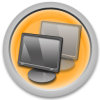| Field name | Description | Example(s) |
| Item title | Stores the actual or invented title of the item. | Self-portriat;
Staff;
Love letter;
Soccer ball |
| Description | Physical description of the item using simple terms. | Leather soccer ball;
Necklace with blue and red glass beads;
Painting with old woman sitting on a rocking chair |
| Item name | Narrow term describing the item. It is strongly advised that standardised terms are used in this field for later retrieval. | Chair;
Drawing;
Cup;
Ball |
| Item type | Broad term describing the item. It is strongly advised that standardised terms are used in this field for later retrieval. | Furniture;
Artwork;
Artefact |
| Medium | Medium in which the item is rendered or materials that the it consists of. | Leather, string;
Oil on canvas;
Bone, rope |
| Measurements | Metric measurements prefered and standardisation is advised. Height x width x depth x diameter (indicated with 'd') x circumference (indicated with 'c') | 1200x1300mm;
120x130cm;50x50x60mm |
| Inscription | Signature, date, markings, etc. actually inscribed on the item. Indicate where the actual inscription is: verso, front, bottom left, top centre, etc. You can also use the Specific inscription field (Description Notes) to add more detailed information. | Verso: Pablo Picasso (signed in pencil)
Top: Johannesburg Clothing Ltd. (label inside garment) |
| Period | Period associated with creation of the item. | Pre-colonial
Post apartheid
1950s |
| General date | General date associated with creation of the item. This is a text field so any character accepted | 1900-1968;
1900s;
c1855;
Early 20thC |
| Dated from | Specific date (numeric year only) the item was created (use minus sign for BC dates) | 1900;
1875;
1999 |
| Dated to | Specific date (numeric year only) the item was completed (use minus sign for BC dates) | 1900;
1875;
1999 |
| Keywords | Keywords that will assist in identifying and contextualising this item. It is strongly advised that standardised terms are used in this field for later retrieval. Note the Thesaurus option under Navigation which you can use to paste keywords directly from the Thesaurus to the Keyword field. | Literaly any words can be used here |
| Categories | Categories assist in grouping items with shared characteristics. It is strongly advised that standardised terms are used in this field for later retrieval. Note the Categories option under Navigation which you can use to record categories and paste directly into the Categories field. | Floral;
Political;
Seascapes |
| Themes | Themes that recur amongst items in your collection. It is strongly advised that standardised terms are used in this field for later retrieval. Note the Themes option under Navigation which you can use to record themes and paste directly into the Themes field. | Early years;
Abstract period;
Post apartheid |
| Filters | Used to tag certain items that have little to do with the description. It is strongly advised that standardised terms are used in this field for later retrieval. Note the Filter Codes button which you can use to record filters (code and explanation) and paste directly into the Filters field. | HIGH (items of high importance);
REMOVE (items for possible removal from the colletion) |
| Item ID | This field is for a compulsory unique code or number for the item - the database will not accept duplicates. Note the ID button which keeps track of your numbering - click the button and follow the on-screen instructions. | 90/121;
1.013.1997;
1998/AF/10 |
| Class / Coll ID | This field is for a classification number, or identifier, for the item. | Dewey numbering; etc. |
| Barcode ID | This field is for a barcode associated with an item. | Any barcde and be entered |
| Notes | Notes relating to the research of the item. | Enter any text |

